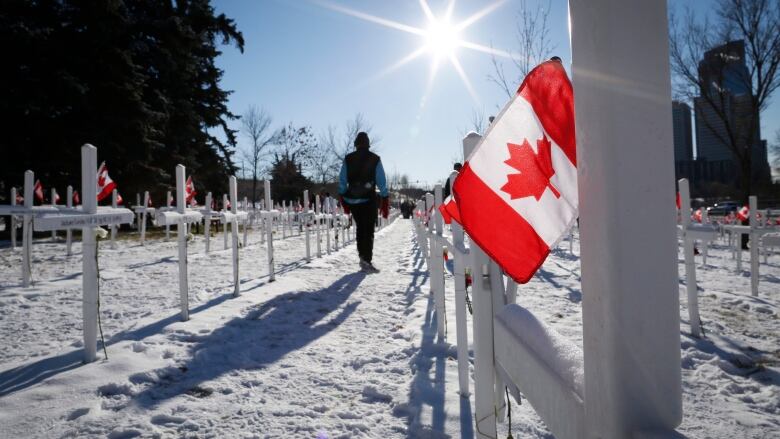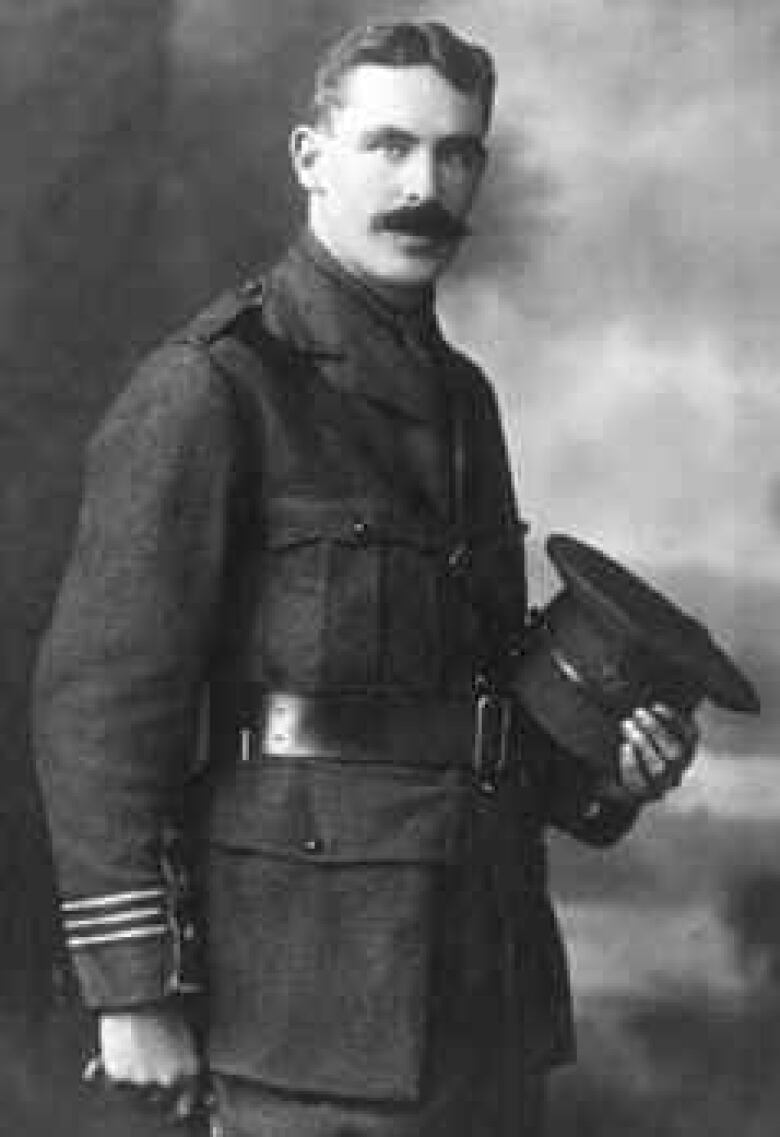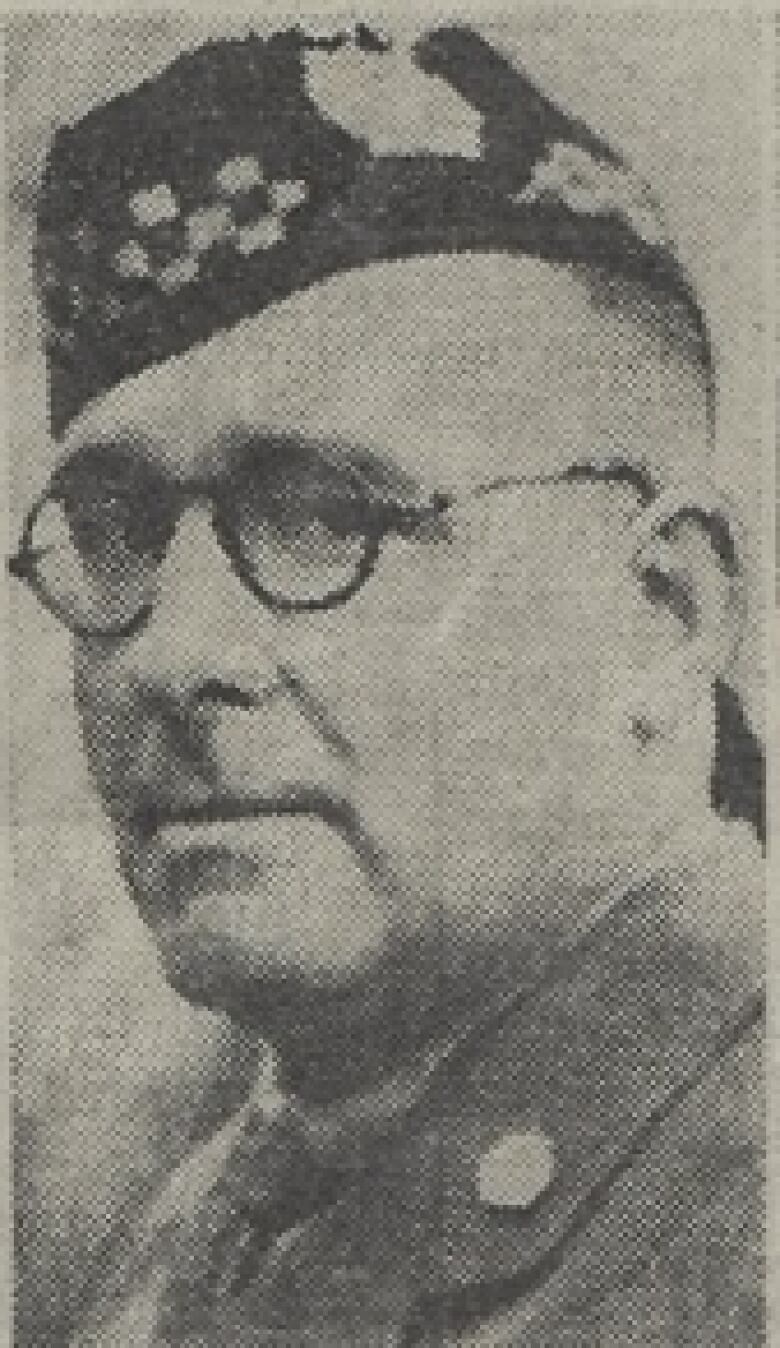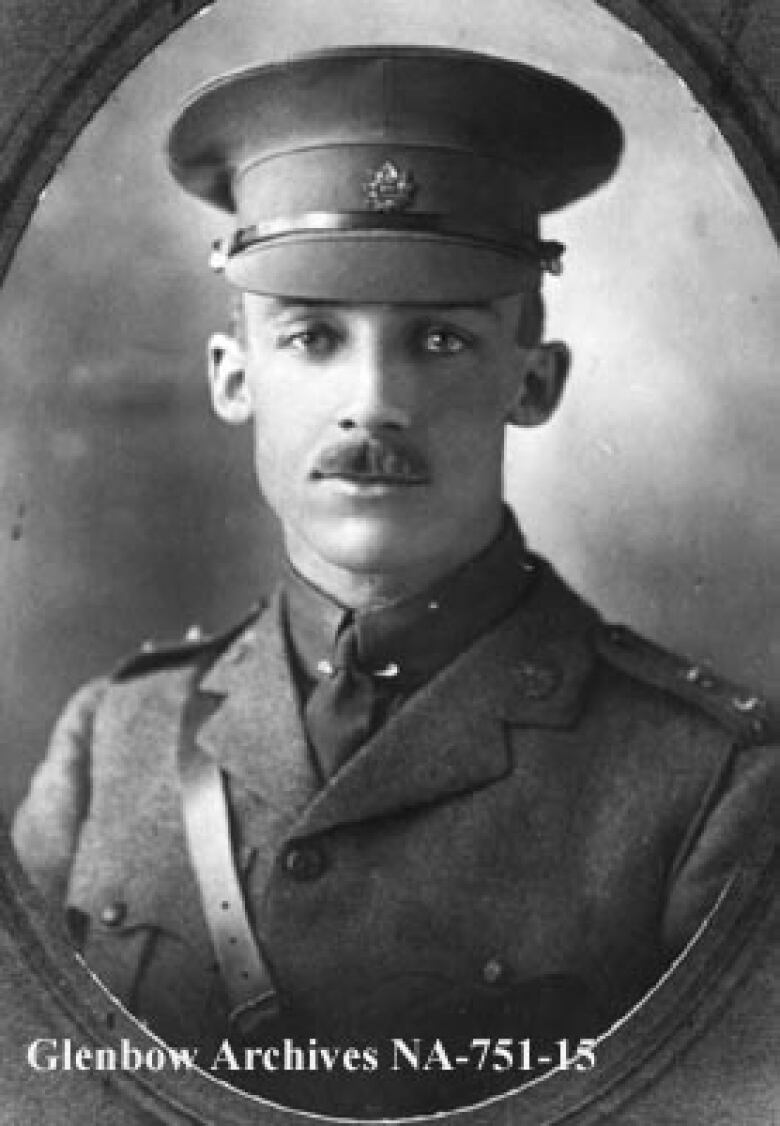Remembrance Day: 3 remarkable stories of Calgary men who died fighting for Canada
Infamous yellow telegrams brought the wars home to southern Alberta

Thomas Leppard points out a date seen over and over again onthe 3,200 white crosses in the Field of Crosses along Memorial DriveApril 23, 1915.
"It's really the first day the First World War comes to Calgary," saidLeppard,president ofValour Canada, a Calgary non-profit group that aimsto connect Canadians to their military heritage.
Over the next week, hundreds of tell-tale yellow telegrams would be delivered to homes in the Calgary area, with the sombre opening line, "We regret to inform you"
- Thousands attend Remembrance Day ceremonies in Calgary and area
- Stoney soldier Joe Poucette remembered for bravery after WW II death
First battle of First World War
Onthe night of April 22, 1915, and into the next morning, the Calgary 10th Battalion (Canadian Highlanders) along with the 16th Battalion (Canadian Scottish) from Victoria launched the first Canadian attack of the First World War at Kitchener's Wood, near St. Julien, Belgium.
The 10th Battalion was asked to fill the gap left by the French who were without masks and not prepared for the chlorine gas onslaught.
It was the inaugural gas attack by the Germans.
The Germans attacked at midnight and the soldiers had no idea where they were going, following instructions to attack in the direction of Kitchener's Wood. They did so with 800 men, but by morning only 200 had survived. About 600 of those soldiers were from the Calgary area and that's why the date "23-04-15" seen over and over again in the Field of Crosses.
"It was a complete slaughter," said Leppard. "We need to remember that within this field of crosses there were a lot of young men that that was their last day."
But it was a pivotal one, because it delayed the advance of the Germans.
Here are the stories of just three of the remarkable soldiers from southern Alberta, who died in the First and Second World Wars.
Lt.-Col.Russell Lambert Boyle

Boyle, 34, was the second commanding officer of the 10th Battalion and led the attack that night. He was right out front, says Leppard.
"He was just one of those derring-do kind of John Wayne figures."
He stood about six feet two inches and was described as "charismatic, rugged and handsome."
Boyle's mission was to stop the German advance on a counterattack that changed history.
But Russell died on the fieldthat night from multiple gunshot wounds. He's buried at the Poperinghe Old Military Cemetery in Belgium, about 10.5 kilometreswest of Ypres town centre.
Then his brother Mahlon enlisted with the 49th Battalion from (Edmonton). He was decorated for bravery. He too later died in August 1915 after a direct hit on his headquarters.
"It's a sad story. The brothers were very close and neither survived the war," said Leppard.
Both ranchers and farmers, the families had moved west for a better life. They were the breadwinners of their families, both leaving behind children and wives.
Capt. Ernest Pinkham

Pinkham was 25 when he enlisted in 1915 with the 31st Alberta Battalion. Of the 66,000 men and women who died in the First World War, he is one of 19,665 who have no known grave.
The Pinkhams were a very well known Calgary family as Ernest's father was William Cyprian Pinkham, Archbishop of the Calgary Anglican diocese from the 1880s to the 1930s.
Pinkham graduated from U of A as a lawyer. He enlisted and fought with the battalion and saw a lot of heavy action anddied on Sept. 15, 1916, at the Battle of Mt. Sorrel east of Ypres in Belgium.
"We have no idea what happened to him," saidLeppard.
That same day, 180 men died from Pinkham's battalion.
Though he has no known grave, Pinkham's name is one of 11,265 names on the Vimy monument in France.
The reason so many have unknown graves, says Leppard, is because early in the war, "they didn't have the mechanisms in place to deal with the vast number of casualties."
When a soldier died, they were often buried right away with a simple cross. "And those battles would rage back and forth across those cemeteries time and time again."
"Not knowing the final resting place of their sons or daughters, this is the only cross they have," says Leppard of the white cross in Calgary's field of crosses.
Capt. Theodore Insinger

At 47, Insingeris another fascinating character of the war. The captain of the Calgary Highlandersdied Aug. 19, 1942, the day of the bloody Dieppe raid.
He's likely the oldest person commemorated in Calgary's Field of Crosses and also the first combat casualty of the Calgary Highlandersin the Second World War.
Of the 5,000 Canadians who tried to raid the French port of Dieppe, 904 of them were killed while 2,300 were wounded and captured by the Germans.
"It's Canada's worst day of the war and, unfortunately, Theodore Insinger was one of the casualties that day," saidLeppard.
But the fascinating question for Leppard is why he was there at age 47.
Insinger was, in fact, Dutch and had served in the Dutch army during the First World War and he was also the Dutch fencing champion. In the 1930s, he and his wife came to Canada and ended up in Calgary.
After he enlists, Insinger, who is fluent in several languages German, French and Dutchthe Canadian Army picks him out for a staff job at headquarters where he can decipher German documents.
The day of the Dieppe raid, he is on the command shipwhere they are trying to determine what's happening on the bloody shores of Dieppe. As the ship moves closer to shore, it is hit several times and Insinger is killed, his body being thrown from the ship and never found.
"The connection there is that the Calgary Highlanders played an essential key role in the liberation of Holland and the first Calgary Highlander casualty in the liberation, as it would turn out, was in fact Dutch an amazing story."












_(720p).jpg)


 OFFICIAL HD MUSIC VIDEO.jpg)
.jpg)



























































































